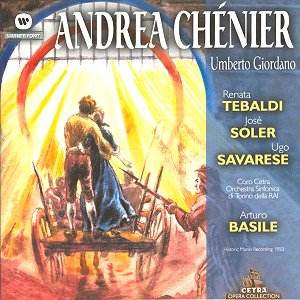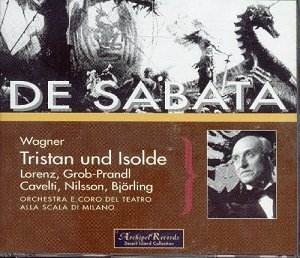 Composer: Gaetano Donizetti
Composer: Gaetano Donizetti
Works: Lucia di Lammermoor
Performers: Lina Pagliughi, soprano; Giovanni Malipiero, tenor; Giuseppe Manacchini, baritone; Luciano Neroni, bass; Muzio Giovagnoli, tenor; Maria Vinciguerra, mezzo-soprano; Armondo Giannotti, baritone; Orchestra and Chorus of the Italian Broadcasting Authority
Recording: Recorded in Rome from 17 to 24 May, 1939
Label: NAXOS HISTORICAL 8.110150-51 [2 CDs 134.24]
Donizetti’s “Lucia di Lammermoor,” a cornerstone of the bel canto repertoire, remains a significant touchstone for both performers and audiences alike. Composed in 1835, it skillfully blends a narrative of tragic love with an intricate vocal line that demands both technical prowess and emotional depth from its interpreters. The 1939 recording led by Ugo Tansini captures a moment in time, offering insights into performance practices of the early 20th century that stand in stark contrast to the more bombastic interpretations prevalent today.
Lina Pagliughi’s portrayal of Lucia is particularly noteworthy, characterized by a light, limpid soprano that evokes the elegance of 19th-century performance aesthetics. Her coloratura passages are executed with remarkable clarity and precision, showcasing her ability to navigate the demanding vocal lines with grace. Pagliughi’s interpretation eschews the heightened emotive stylings exemplified by later sopranos like Callas and Sutherland, opting instead for a nuanced approach that highlights the ethereal beauty of the character. This stylistic choice offers a refreshing perspective on Lucia, whose madness and despair are conveyed not through sheer vocal power, but through delicate shading and expressive phrasing.
Giovanni Malipiero’s Edgardo complements Pagliughi’s Lucia with a tenor voice that possesses a refined clarity and lyrical warmth. His singing displays a commendable balance between vocal power and the emotional subtleties required by the score. Malipiero’s portrayal resonates with the bel canto tradition, aligning perfectly with Pagliughi’s interpretative choices. Both singers demonstrate an understanding of the operatic idiom that favors lyrical phrasing over dramatic bombast, which is particularly effective in the duet “Verranno a te sull’aure” where their voices intertwine with captivating harmonic precision.
The orchestral support provided by the Orchestra and Chorus of the Italian Broadcasting Authority under Tansini’s direction is equally commendable. Tansini’s conducting strikes a balance between maintaining orchestral clarity and enhancing the singers’ lines without overpowering them. The sound quality of this remastered recording is remarkably fresh for its era, allowing the nuances of the orchestra to emerge clearly, which is essential for appreciating the delicate interplay between voice and instrumentation that characterizes Donizetti’s writing.
It must be noted, however, that this recording has been subjected to significant cuts, a common practice of the time that may disappoint purists. Such editorial choices, while historically contextualized, lead to a loss of the work’s full emotional arc. Comparatively, Richard Bonynge’s later recordings with Joan Sutherland offer a more complete version of the score, albeit with a different interpretative ethos that emphasizes grandiosity over subtlety. This recording also includes a selection of additional arias by Pagliughi, which further showcases her versatility across the bel canto repertoire, including highlights from Rossini and Verdi, thereby placing her artistry in a broader historical context.
The absence of a libretto is a minor drawback, though the included plot summaries provide sufficient context for listeners unfamiliar with the opera. Overall, this archival recording serves not only as a testament to Pagliughi’s extraordinary talent but also as an important document of a performance style that has largely faded from contemporary stages. The artistry on display here resonates with the highest musical standards, inviting listeners to appreciate the elegance and intricacy of Donizetti’s operatic language. Engaging with this recording is akin to stepping into a time capsule of operatic history, revealing a layer of interpretative richness that continues to inspire and provoke thought among connoisseurs.



